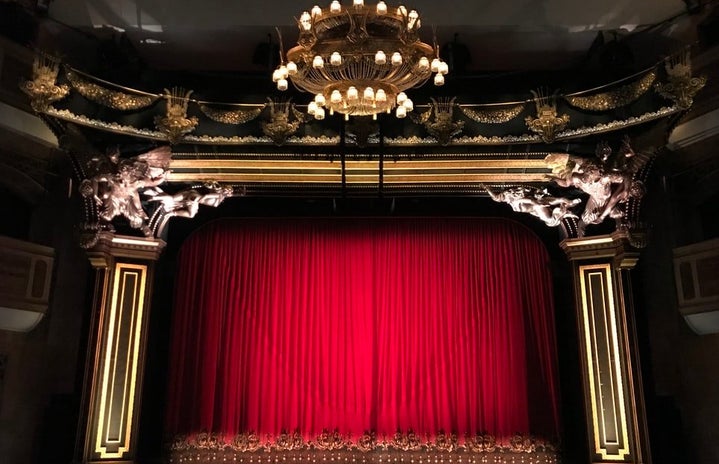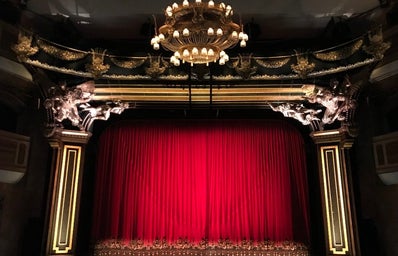On February 4, 2022, I watched one of the best dance performances I have ever seen. Filled with laughter, community, struggle, and sorrow, Camille A. Brown and Dancers delivered not only performance but the story of Black Americans.
Camille A. Brown is an award-winning, Black, female choreographer and director. Ms. Brown works to reclaim “cultural narratives of African-American identity” as stated in the show’s program. She uses the raw experiences of oppression, discrimination and prejudice that African-Americans have faced for generations, and also stories of the community they have built together to bring awareness and share the story of Black people in America.
The show consisted of three pieces, “Mr. TOL E. RAncE” (except- 2012, revised 2019), “ink” (except- 2017), and “New Second Line” (2006). “Mr. TOL E. RAncE” addresses the Black stereotypical roles that have been assigned to Black performers through popular culture such as the angry Black woman, the sassy best friend, the thug, and the help. These are often roles that are meant to aid the White protagonist or to bring comedy to the piece.
It also brings to light the tolerance Black performers have had for the modern form of minstrel shows that still exist today. According to the Encyclopedia Britannica, a minstrel show is a comic enactment of a racial stereotype often performed by a White person with a blackened face. These were popular in the early 19th and 20th centuries and are now considered widely offensive.
The dancers in “Mr. TOL E. RAncE” portrayed the exhaustion that comes with trying to meet a certain image the media wants to produce, switching back and forth from very animated to defeated exhaustion. There was a high level of acting in this piece, which in my opinion, made the piece that much more powerful. A way of performing dance that is taught to the dancers of CABD (Camille A. Brown and Dancers) shared with me by Thao Dang, a third-year San Jose State School of Dance student who performed in the third piece of the show: “We are not performing for the audience; they just so happen to be there to witness us.”
The second piece called, “ink”, is a celebration of the Black culture. It showcased gestures, rituals and traditions that have been passed down for generations. These are often the parts of African American culture that are appropriated and silenced. These gestures and traditions are often referred to as “unprofessional” and “ghetto”, but Brown’s choreography celebrates their authenticity of them and the importance of keeping them alive in the culture.
There is a repeated movement in this piece that CABD dancers Timothy Edwards and Maleek Washington shared translates to them claiming their space, as their vibrant culture more than deserves space in this world.
Finally, the third piece called “New Second Line”, was performed by the San Jose State School of dance students. Second Line is a tradition that takes place for weddings, social events, and most notably, funerals. It consists of a brass band parade followed by people dancing joyously; these people are called the second line.
This piece was taught to the SJSU dance students by Mora Amina Parker, a former Camille A. Brown dancer, in a week. Thao Dang, a featured dancer in this piece, shared that the dancers started by learning about the history of second lining and “the aesthetic of the movement.”
The piece begins somber and slow but as soon as the music picks up the piece moves in full force till the very end. Thao states, “There was so much relayed through the eye contact we had on stage, it was much like a family celebration and reunion that we had, and everyone was just there to witness it. “New Second Line” itself is a nine-minute cardio routine; it’s nonstop jumping, and I was definitely dying of air till the very end; however, it’s just so rewarding to know that we did that.”
Thao also exclaims that this was the first time in two years that she was able to perform on a large stage, mask-less. She relates, “I was so worried about what my face was going to look like because I had been dancing with a mask for so long, but in those moments of performing I couldn’t help but smile as I saw all my peers’ full faces in those moments.”
Thao says that she hopes SJSU is able to work with more companies like this in the future as she was able to add diversity to her movement vocabulary and work with artistically amazing people.
Personally, I am extremely thankful for the opportunity to see this show as it was an emotional and educational experience. I have never seen social issues discussed in such a beautiful and authentic way. Everyone should take a second to look at CABD’s website and learn more about the company, watch some of their videos, and look for upcoming performances.
Seen the show? Tell us what you think by tagging us @HerCampusSJSU!


